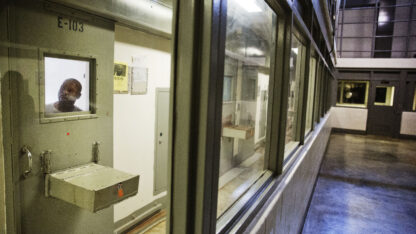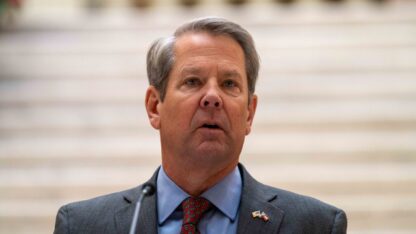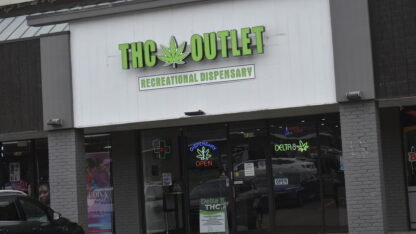Atlanta’s Tree Protection Ordinance Could See Significant Changes

A child swings from a tree atop a hill along the Atlanta BeltLine in Atlanta. As of 2014, Atlanta had 47 tree percent canopy cover. The city’s goal is to have 50 percent.
David Goldman / Associated Press
Atlanta is beginning to revisit its tree protection ordinance.
The rule is meant to guide property owners and developers, but there’s been frustration with it. For years, the city has said it’s going to revisit the ordinance. Now, the Planning Department says it will redo the rule this summer.
Drive around Atlanta, and it’s easy to see that trees are getting cut down. As Atlanta has bounced back from the recession and development has increased, more land has been cleared. The greatest losses, according to a Georgia Tech analysis, are on private property, including many single-family lots.
As of 2014, Atlanta had 47 percent canopy cover. The city’s goal is to have 50 percent.
The City of Atlanta is asking for feedback on people’s experience with the current tree protection ordinance and scheduling meetings through the summer on the rewrite.
“There is a lot of interest,” said Elizabeth Johnson, project manager with the Department of City Planning. “We’ve heard a lot from a lot of passionate people in the city.”
At a public meeting Tuesday night in Buckhead, residents had questions about the ordinance. Most were focused on protecting trees; others had concerns about being allowed to cut trees that they’re scared might fall on their homes.
Peachtree Hills resident Laura Dobson said she’s upset that she’s seen a lot of trees cut down in her neighborhood, and she wonders what the new ordinance will do to protect more of them.
“What happens to my tree, what happens to my next door neighbor’s tree?” she said. “When I drive down my street, how is it going to look different under this ordinance?”
At the same meeting, the city presented its urban ecology framework, which is a broader plan for thinking about nature in the city.
Among the recommendations: create major parks along the Chattahoochee River and the South River; connect more communities to each other and to natural areas with additional trails; increase invasive species management; and give streams a 300-foot buffer from development (current law requires a much smaller margin).
Jennifer Dowdell, senior landscape ecological planner with Biohabitats, a company consulting with Atlanta on the urban ecology framework, said the goal was to figure out what kind of nature exists in Atlanta, and how to protect it and connect people to it.
“What are those resources that need to be preserved and protected and enhanced, and really highlight them,” she said.
Biohabitats is also working with the city on the new tree ordinance.
“It is incredibly impressive to see a city — when you fly into Atlanta — that has all of this mature tree canopy,” Dowdell said.
Greg Levine, co-executive director of Trees Atlanta said he loves the concept of the urban ecology framework, but he’s waiting to see how the rubber hits the road with the tree protection ordinance.
“We’re going to have to make some significant changes, and I’m looking forward to seeing what those are going to be,” he said.







